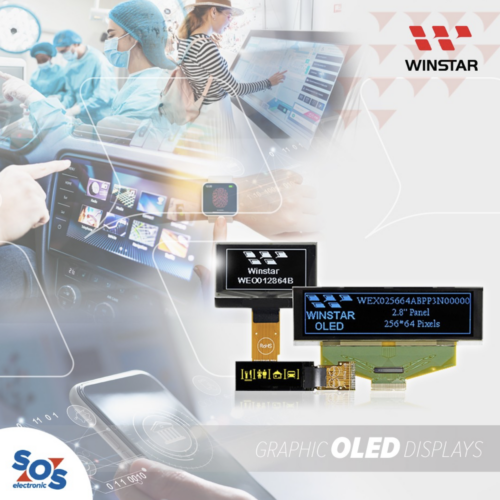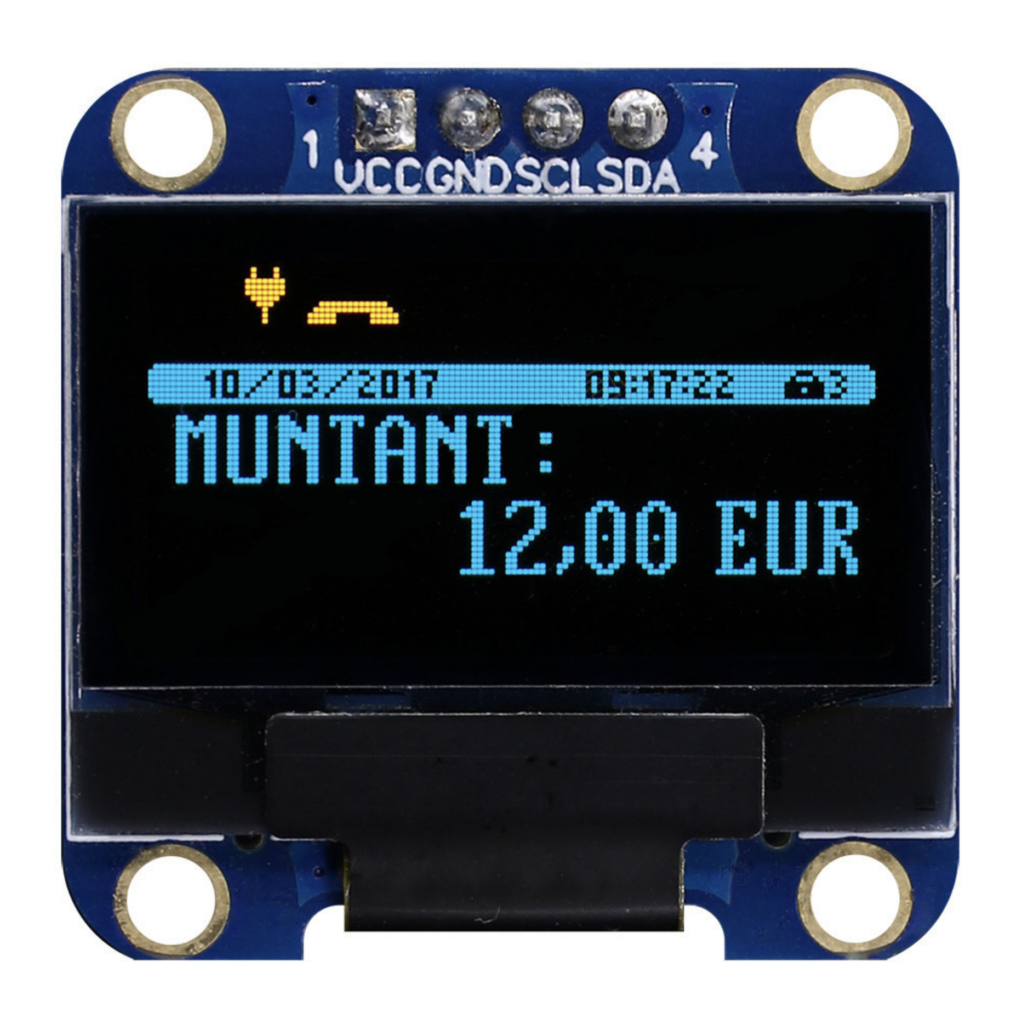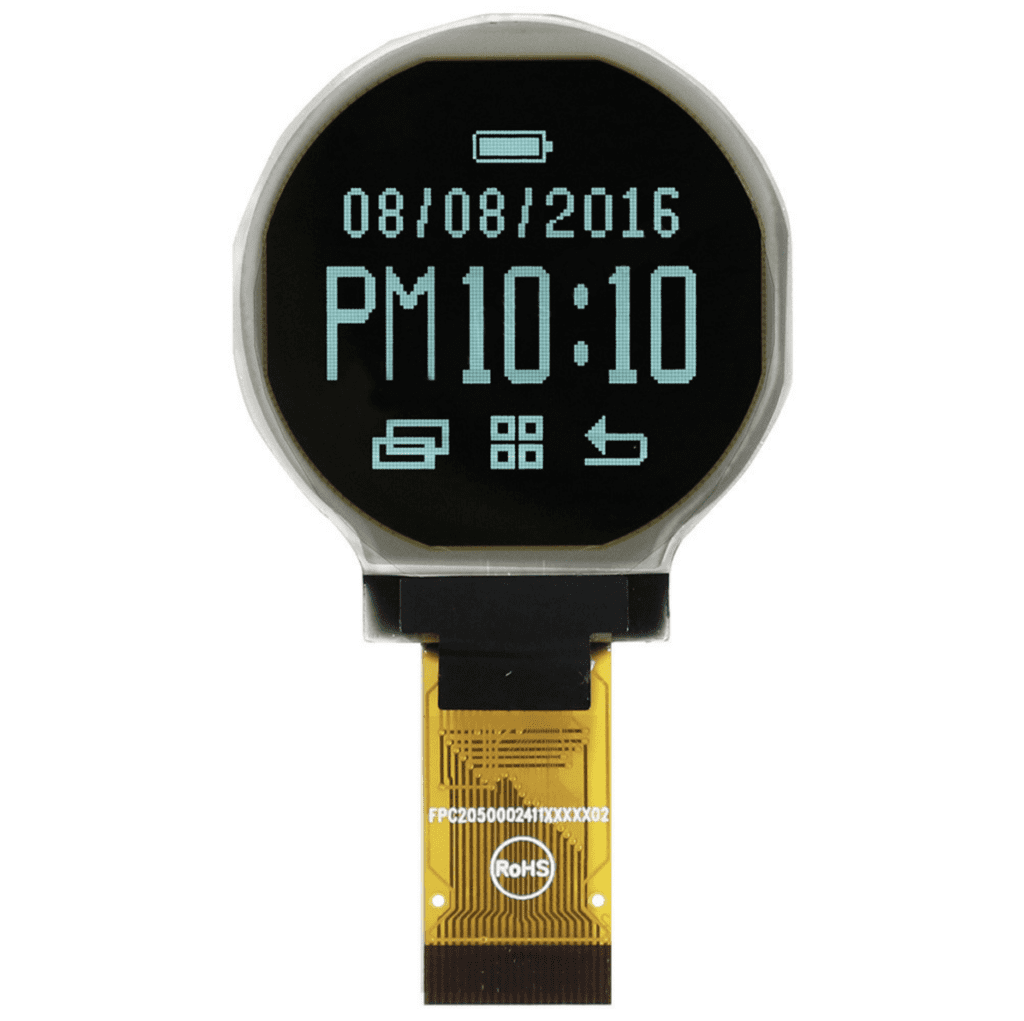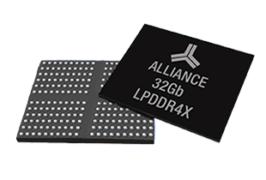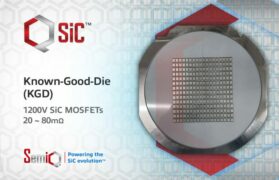Unlock the power of easy integration with Winstar’s graphic OLED displays. Streamline your device development and assembly process with application-specific PCBs, making innovation a walk in the park. Explore the possibilities – dive into the latest Winstar products in SOS electronic extensive lineup!
MARTIN BRESTOVIČ SOS electronic Product Specialist More articles from the author
Graphic OLED displays by Winstar
Simple and familiar abbreviations from the world of displays are known by almost everyone. For the sake of completeness, however, we are adding some basic information.
Graphic COG and COG + PCB OLED displays by Winstar
Grafic OLED modules by Winstar are available in three mechanical designs – COB, COG, and COG with an application board (PCB). They are available in sizes ranging from 0.49″ to 5.5″, featuring integrated controllers and interfaces, including I2C and SPI. The typical operating voltage is 3 V or 5 V.
- COB – chip on board
- COG – chip on glass
- COG + PCB – chip on glass (display) applied on a printed circuit board (PCB)
COG vs COG + PCB display. Which one to choose?
“The answer is quite simple and logical,” says Martin Brestovič, a product specialist at SOS electronic. “The COG version is a more cost-effective display option since it consists of just the ‘glass’ with an FPC cable. The controller is integrated into the display glass. This is the most commonly used solution when you are developing an application where every bit of space is valuable, and you also want to minimize costs.”
However, it’s important to note that the assembly of a COG display is more demanding in the sense that you need to have an accurate form or a special fixture for precise mounting (adhesion) of the display to the PCB. Furthermore, to ensure the display functions correctly, it’s usually necessary to add a few additional components around the display, as recommended in the datasheet for that particular display.
All of this is eliminated when using the COG + PCB display variant. Assembly into the final device is accomplished using screws at the corners of the supporting PCB, ensuring the precise and stable positioning of the display. Also, all the necessary components for direct use of the display through one of the common interfaces, typically I2C or SPI for small graphic modules, are already mounted on the PCB.
The COG + PCB display version is ideal for development for small to medium serial productions due to its easy assembly. On the other hand, the COG version is the most economically advantageous and is suitable primarily for large production runs.
And what about the classic COB structure?
From the user’s perspective, this structure is very similar to the COG + PCB version. However, here, we no longer have the potential option to, for example, do the development with a PCB version and then use the corresponding display in mass production.
How do we distinguish between the display’s COG and COG + PCB versions?
When it comes to OLED displays from Winstar’s production, it’s very simple:
- the name of COG versions starts with the letters WEO, e.g. WEO128128A
- the name of COG + PCB versions starts with the letters WEA, e.g. WEA128128A
Winstar offers various types of displays in both versions in their product portfolio, giving you the flexibility to choose according to your requirements.
SOS electronic has selected and included these three types of COG + PCB OLED graphic modules from Winstar in their stable inventory, as they are very versatile, with sizes and parameters suitable for many applications.
- WEA128128A – 1,5″, 128 x 128 px, SSD1327, 3,3 V/5 V, SPI (possibly also I2C)
- WEA012864A – 1,54″, 128 x 64 px, SSD1309, 3 V, SPI (possibly also I2C)
- WEA009664B – 1,1″, 96 × 64 px, SSD1327, 3 V, SPI
Winstar’s Graphic OLED displays are suitable for a wide range of modern applications
Winstar’s small OLED display modules are perfect for numerous devices requiring an electronic display panel.
These applications include wearable devices like smartphones and watches, electronic cigarettes, POS systems, household appliances, home applications, industrial devices and automation, audio/visual display systems, medical devices, personal care appliances, automotive displays, and dynamic information displays.
Winstar WEO128128B: Self-Illuminating OLED Display for Diverse Applications
The WEO128128B belongs to the COG structure OLED display category, characterized by its incredibly slim profile and self-illuminating properties, eliminating the need for a backlight. It’s designed to be lightweight and consume minimal power. This circular OLED module proves to be an excellent fit for a wide range of applications, including portable instruments, wearable devices, and various home applications.
Are you interested in more videos? Follow us on YouTube channel
If you have a promising project in which you would like to use a display from Winstar’s production, SOS electronic can assist you in obtaining sample quantities in collaboration with the manufacturer. Feel free to contact them.
Are you interested in more information about Winstar products or technical advice in product selection? Do you have any other questions or requests? Don’t hesitate to contact SOS electronic.
Get a sample for your project:
Do you need to test a component during development? Contact SOS electronic they will provide you with a sample for your project. Each request is evaluated individually, so please briefly introduce your project in the following form.
Please note that samples are provided for projects in the development phase, not for personal use.
Thank you for your understanding.


